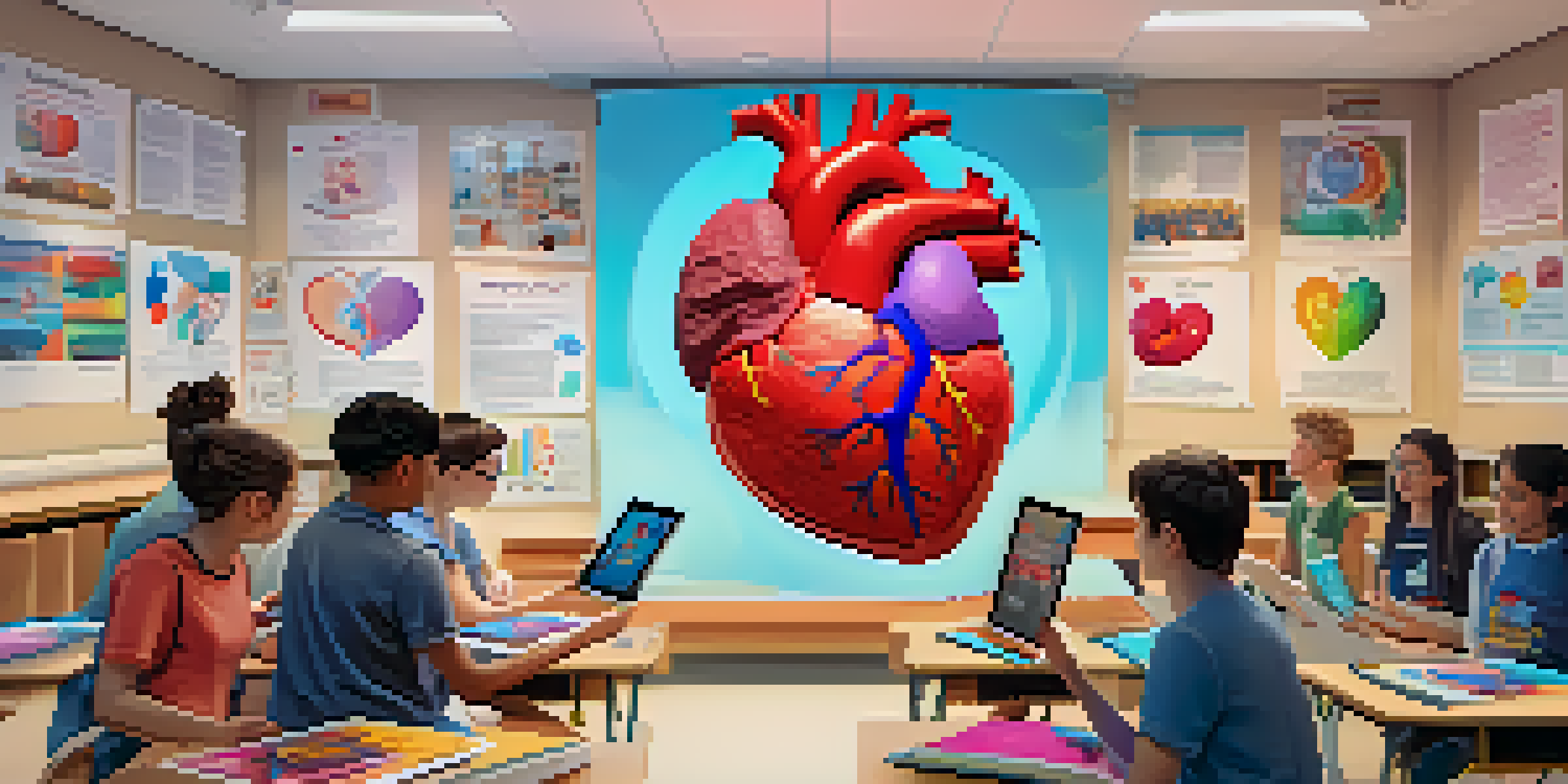AR as a Tool for Visualizing Complex Concepts

Understanding Augmented Reality and Its Potential
Augmented Reality (AR) blends the digital world with our physical surroundings, creating interactive experiences that enhance our understanding. Imagine looking at a textbook and seeing a 3D model of the solar system pop up before your eyes, providing depth and context that flat images simply can’t convey. This capability makes AR a powerful tool for visualizing complex concepts, whether in education, healthcare, or even engineering.
Augmented reality is the perfect blend of digital and physical, creating a new way to engage with our surroundings.
The potential of AR extends beyond mere visualization; it provides an engaging way to interact with information. For instance, medical students can use AR to explore human anatomy in a 3D environment, allowing them to grasp intricate structures and functions that are often hard to visualize. This immersive experience not only aids retention but also fosters a deeper understanding of the subject matter.
As AR technology continues to evolve, its applications in simplifying complex concepts are expanding rapidly. From virtual anatomy lessons to interactive engineering simulations, AR can cater to various learning styles, making it a versatile tool in our educational toolkit.
AR Enhancing Education: A Case Study
Consider a classroom where students are learning about the human body. Traditional methods involve diagrams and textbooks, which can sometimes feel distant. However, with AR, students can point their devices at a printed page and watch a heart beating in 3D, with labels identifying different parts. This transformation turns a static lesson into a dynamic experience, making learning more compelling.

One notable example comes from a school that implemented AR technology in its science curriculum. Students who engaged with AR content showed a 30% increase in understanding complex topics like cellular biology compared to those who relied solely on traditional methods. This demonstrates how AR can cater to different learning preferences and create a more inclusive environment.
AR Transforms Education
Augmented Reality enhances learning by providing interactive 3D experiences that make complex subjects more engaging and easier to understand.
Moreover, the excitement generated by AR can inspire students to explore subjects they might have found dull otherwise. By bridging the gap between theory and practice, AR not only makes learning more engaging but also instills a genuine curiosity about the world.
AR in Healthcare: Visualizing Patient Data
In healthcare, AR is revolutionizing how professionals visualize and interact with patient data. Imagine a surgeon looking through AR glasses during an operation, where critical information about the patient’s anatomy is overlaid directly onto their field of view. This real-time visualization helps surgeons make more informed decisions quickly, enhancing patient outcomes.
AR will become the next big computing platform, just like the PC and the smartphone.
For instance, a team of surgeons used AR technology to overlay 3D images of a patient's tumor onto their body during surgery. This allowed them to navigate complex structures and execute precise interventions that would have been challenging to visualize otherwise. Such applications highlight how AR can bridge the gap between complex medical data and practical application.
Additionally, AR is proving beneficial in training medical students, allowing them to practice procedures in a risk-free environment. By simulating real-life scenarios, students can gain invaluable experience, building confidence and competence before they even step into an operating room.
AR in Engineering and Design: A New Perspective
In the fields of engineering and design, AR offers a fresh perspective on complex projects. Imagine architects being able to walk through a 3D model of a building at its proposed site, adjusting dimensions and layouts in real time. This capability allows for immediate feedback and refinements that traditional blueprints simply cannot provide.
One major construction firm utilized AR to visualize structural elements during the planning phase of a skyscraper. By overlaying digital models onto the physical site, engineers could identify potential issues early on, saving both time and resources. This proactive approach underscores how AR can enhance collaboration and improve project outcomes.
AR Revolutionizes Healthcare
In healthcare, AR allows surgeons to visualize critical patient data in real time, leading to improved decision-making and patient outcomes.
Furthermore, AR helps clients visualize finished projects, making it easier for them to understand the design intent. This transparency can lead to more informed decisions and fewer revisions, ultimately streamlining the design process.
Bridging Cultural and Language Barriers with AR
AR is not only about visualizing data; it can also bridge cultural and language barriers. Imagine traveling in a foreign country and pointing your phone at a menu, only to see it instantly translated and displayed in your language. This practical application of AR makes complex concepts, like languages and cultural nuances, more accessible to travelers and learners alike.
For example, a tourism app using AR can provide historical context to landmarks by overlaying information in multiple languages. This not only enriches the visitor's experience but also fosters a deeper appreciation for cultural heritage. By making information more accessible, AR encourages engagement with diverse cultures.
Additionally, in educational settings, AR can support language learning by providing interactive vocabulary lessons in real contexts. This immersive approach helps learners better retain new words and phrases, making language acquisition more intuitive and enjoyable.
Challenges and Limitations of AR in Visualization
Despite the promising potential of AR, there are challenges and limitations to consider. One significant hurdle is the accessibility of AR technology; not everyone has access to the latest devices or high-speed internet, which can hinder widespread adoption. Without equal access, the benefits of AR may not reach all learners, creating disparities in education.
Another challenge is the need for content development. Creating high-quality AR experiences requires expertise and resources, which can be a barrier for smaller organizations or educational institutions. To overcome this, collaboration between tech companies and educators is essential to develop affordable and effective AR solutions.
AR Bridges Cultural Gaps
Augmented Reality helps overcome language barriers by providing instant translations and cultural context, enriching the experience for travelers and learners.
Lastly, there's the issue of usability. If AR applications are too complex or unintuitive, they can frustrate users rather than enhance their understanding. It's crucial for developers to prioritize user experience, ensuring that AR tools are easy to navigate and genuinely beneficial for visualizing complex concepts.
The Future of AR in Visualizing Complex Ideas
Looking ahead, the future of AR in visualizing complex concepts seems bright. As technology continues to advance, we can expect AR tools to become more sophisticated, accessible, and user-friendly. Innovations like improved graphics and the integration of artificial intelligence will likely enhance the realism and interactivity of AR experiences.
Moreover, educational institutions are increasingly recognizing the value of AR as a teaching aid. With more schools and universities adopting these technologies, we can anticipate a significant shift in how complex subjects are taught, leading to better engagement and understanding among students.

Ultimately, the successful integration of AR into various fields will depend on collaboration between technologists, educators, and industry professionals. By working together, we can harness the power of AR to create a more informed and connected world, where complex ideas are easily understood and shared.